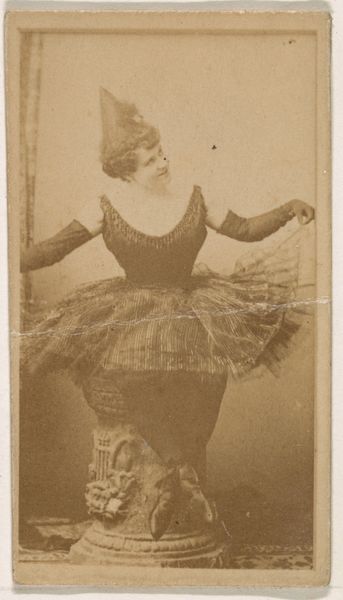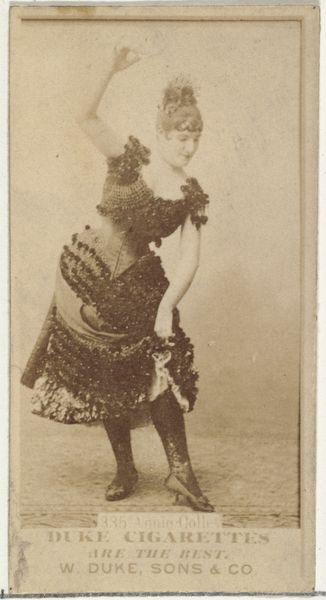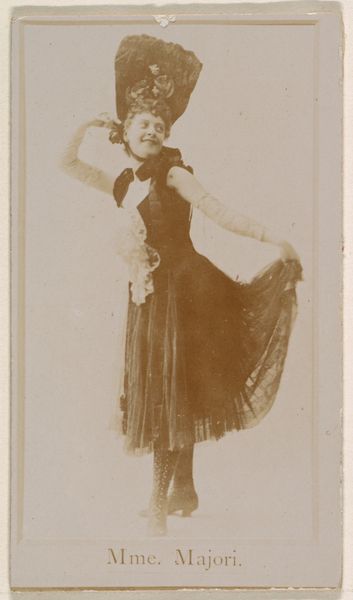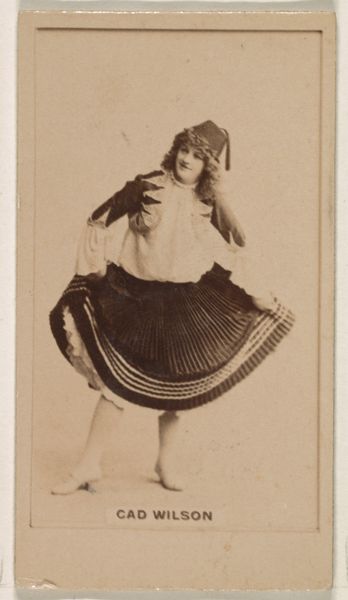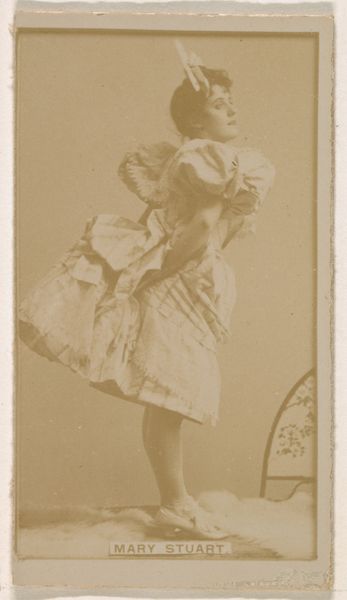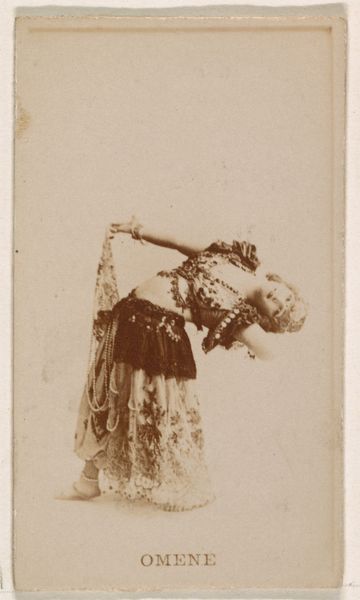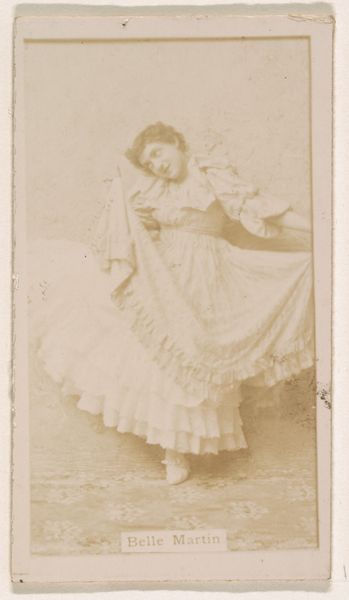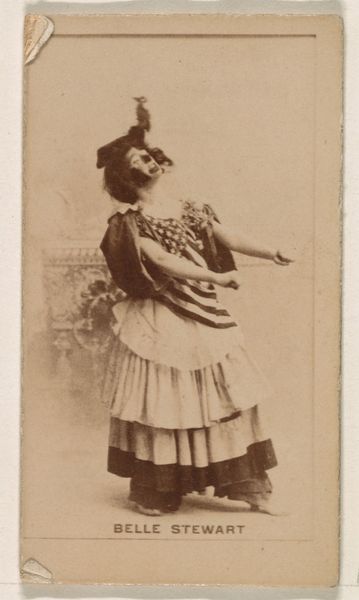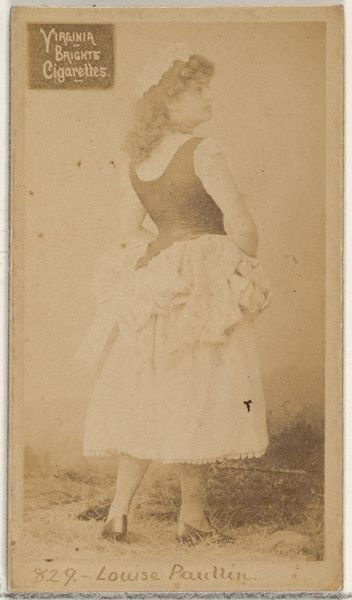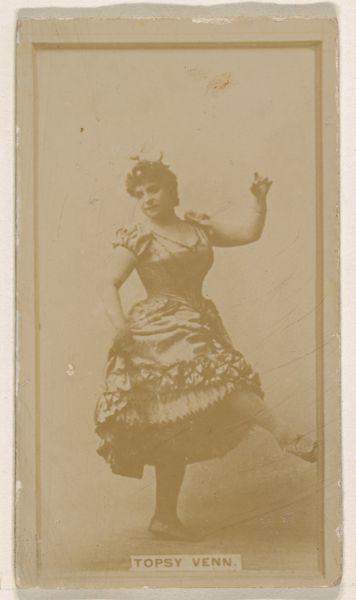
Violet Mascotte, from the Actresses series (N245) issued by Kinney Brothers to promote Sweet Caporal Cigarettes 1890
0:00
0:00
drawing, print, photography
#
portrait
#
drawing
# print
#
figuration
#
photography
#
men
Dimensions: Sheet: 2 1/2 × 1 7/16 in. (6.4 × 3.7 cm)
Copyright: Public Domain
Editor: Here we have "Violet Mascotte, from the Actresses series," a promotional print from 1890 by Kinney Brothers Tobacco Company. It's fascinating; the sepia tone lends such a nostalgic air, and I'm intrigued by how the figure is posed so elegantly. What historical context should we keep in mind when looking at this piece? Curator: Consider the era: this was a time of burgeoning consumer culture. Tobacco companies used these cards, often featuring actresses and other popular figures, as marketing tools inserted into cigarette packs. It's a form of early advertising leveraging celebrity endorsements, wouldn't you say? Think about how these images circulated: mass-produced, ephemeral, but shaping public perceptions of beauty and fame. Editor: So, this seemingly simple portrait reveals a lot about the intersection of entertainment, advertising, and the creation of celebrity. How did the representation of women in these images influence societal norms? Curator: Good question! Actresses were becoming influential figures, and these cards provided accessible images for a wide audience. This image normalizes, and in many cases romanticizes, the role of actresses while simultaneously endorsing a product-- tobacco. These portraits helped define feminine ideals, subtly reinforcing conventional notions of beauty while creating a demand and dependence of these consumer items. Did the image meet what we perceive as feminism today? Definitely not. Editor: It's like a snapshot of evolving social values, where advertising started playing a huge role. It does make you wonder about the impact of such ubiquitous imagery on the culture of that time, shaping desire and gender roles through consumerism. Curator: Precisely. The politics of imagery here are hard at work: Violet Mascotte isn’t just a person; she’s a carefully constructed commodity, simultaneously figure of aspiration and an advertisement for a product promising status or satisfaction. That really sticks with me, what about you? Editor: Absolutely, seeing this card, you understand it embodies a lot of cultural issues during the industrial age, now I have a lot more respect for such an everyday object.
Comments
No comments
Be the first to comment and join the conversation on the ultimate creative platform.

